Deborah J. Ross's Blog, page 83
June 6, 2018
Today's Moment of Serenity
Published on June 06, 2018 01:00
June 4, 2018
Where’d You Get That Idea? Story Inspirations from Lace and Blade 4 Authors
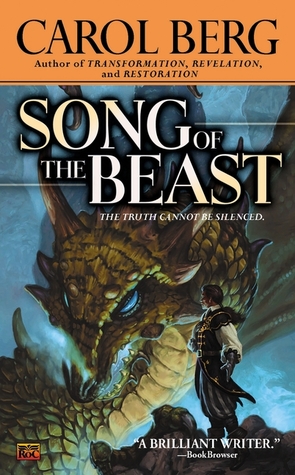
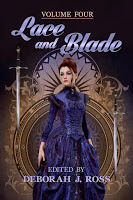 Carol Berg: One of my aims when I create new heroes or heroines is to make them real people. I want readers to believe they had a life before walking onto the canvas of my story and will (if the story permits!) have a life when they walk off again. But of course, after the traumas/losses/victories of the story, the nature of that life is often irrevocably changed. Ever since my novel Song of the Beast was published, I’ve had readers asking what became of Aidan McAllister--a scarred, broken singer of visions, who saved his world from the scourge of dragon warfare. At the end of the story, he abandons his friends and his hope of a normal life to lead the beasts into the wild. I decided that it would be fun to satisfy the readers’ curiosity and mine, and so I wrote “The Heart’s Coda.”
Carol Berg: One of my aims when I create new heroes or heroines is to make them real people. I want readers to believe they had a life before walking onto the canvas of my story and will (if the story permits!) have a life when they walk off again. But of course, after the traumas/losses/victories of the story, the nature of that life is often irrevocably changed. Ever since my novel Song of the Beast was published, I’ve had readers asking what became of Aidan McAllister--a scarred, broken singer of visions, who saved his world from the scourge of dragon warfare. At the end of the story, he abandons his friends and his hope of a normal life to lead the beasts into the wild. I decided that it would be fun to satisfy the readers’ curiosity and mine, and so I wrote “The Heart’s Coda.”Marie Brennan: Some years ago I bought a pair of black-and-red beaded earrings from the jeweler Elise Matthesen, who habitually gives titles to all the pieces she makes. The earrings are called "At the Sign of the Crow and Quill," and like many authors, I pledged to Elise that I would try to write something by that title someday. The mood that evoked in my mind was very much a Lace and Blade mood, so when I received an invitation to submit to the anthology, that turned out to be the spark I needed to transform the phrase into characters and plot.
Heather Rose Jones: “Gifts Tell Truth” is set in the same world as my Alpennia series: a
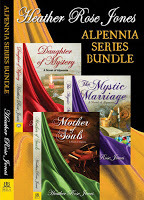 mildly alternate Ruritanian early 19th century with magic. One of the things I love to do when exploring characters it to make offhand references to events in their past. Events where I may not know all the details of what happened, just that it shaped them in some way. One thing that is very clear about Jeanne, Vicomtesse de Cherdillac, one of the protagonists of The Mystic Marriage and a continuing character throughout the series, is that she is a “Woman With A Past.” The more I write about her, the more fascinated I am by how she came to be the person she is in the novels.
mildly alternate Ruritanian early 19th century with magic. One of the things I love to do when exploring characters it to make offhand references to events in their past. Events where I may not know all the details of what happened, just that it shaped them in some way. One thing that is very clear about Jeanne, Vicomtesse de Cherdillac, one of the protagonists of The Mystic Marriage and a continuing character throughout the series, is that she is a “Woman With A Past.” The more I write about her, the more fascinated I am by how she came to be the person she is in the novels.The events in “Gifts Tell Truth” haven’t been specifically referenced in the books, other than a passing comment about how the stories of her youth aren’t appropriate for innocent ears. But I knew in a general way that during the French occupation of Alpennia, just after Jeanne’s unexpected marriage to a much older French aristocratic émigré, she led a wild and scandalous life, spurred on by a tragic event in her coming-out season (which will be told in a later story). The current story grew out of wanting to explore the origins of some of her later attitudes and reflexes, with the added bonus of showing the start of an odd but enduring friendship that features in the novels.
Pat MacEwen: My son-in-law runs EuCon – an annual Comic-Con that takes place in Eugene, Oregon every fall. I met one of their celebrity guests last year – Deep Roy – a diminutive actor who has played Yoda and all of the Oompa Loompas, and has had many other roles in science fiction and fantasy films. The man has a delightful sense of humor and such a deep and abiding intelligence, he intrigued the hell out of me. It so happened I’d already run across a biography of Lord Minimus, and I found myself imagining Deep Roy in the role of that valiant though very short cavalier. And then I got to wondering what would happen if the smallest man in British history were to encounter the Little People during the height of the English Civil War. Now I’m working on a screenplay about his further adventures in France, with the Court-in-Exile.
Marella Sands: A few years ago, a Pakistani man I know introduced me to the game of cricket. He was so excited about it that I guess I just caught the fever, because then I started watching it (also, I read "Cricket for Dummies," which is actually a real thing). For my birthday that year, I asked for a subscription to Willow TV (all cricket, all the time). While I was watching a match and wondering what to do for this story, I suddenly thought, why aren't there more team sports in fantasy stories? Not just mentioned in passing, or set up as a bit of world-building, but introduced as something so integral to the plot, you couldn't have the story without the sport. Almost instantly, I had my four main characters, who play a very cricket-like game in a vaguely West African-like land.
Dave Smeds: There is a great deal of me in “The Wind’s Kiss.” The fulfillment I feel in being a father. The contemplation of the pioneer life led by my ancestors as they moved westward, often literally dwelling right at the edge of civilization, first settlers on the scene. The vital need in our hearts for passion between, and admiration of, one’s lover. However, there is also a more specific inspiration for this particular piece. In August, 2016, I was finally able to take a journey through Nebraska. For the first time in my life, and quite possibly for the last time, I visited the grave of my great great grandmother, Marancy Alexander Warner. The land there has a windswept, deeply conscious aspect. I wanted to install that presence in my fiction as soon as possible, and as it happened, that sort of setting and mood was perfect for what I wanted to write for Lace and Blade 4.

Published on June 04, 2018 01:00
May 30, 2018
A Not-So-Brief BayCon report
 BayCon, a science fiction fantasy convention held in the San Francisco Bay Area over Memorial Day weekend, has been my local con for almost 20 years. Attending has been more of a challenge these last couple of years when the convention moved from a location where I could commute from home, to one that required me to either get a hotel room or crash with a friend. Last year, I stayed with a fellow writer and carpooled to the hotel. This year she was out of town, so I booked a room for Saturday night and asked the programming folks to schedule me for only Saturday and Sunday. It was an interesting experiment, one I am apt to repeat.
BayCon, a science fiction fantasy convention held in the San Francisco Bay Area over Memorial Day weekend, has been my local con for almost 20 years. Attending has been more of a challenge these last couple of years when the convention moved from a location where I could commute from home, to one that required me to either get a hotel room or crash with a friend. Last year, I stayed with a fellow writer and carpooled to the hotel. This year she was out of town, so I booked a room for Saturday night and asked the programming folks to schedule me for only Saturday and Sunday. It was an interesting experiment, one I am apt to repeat.In order to discuss the convention, I have to write about the hotel. The San Mateo Marriott has earned its nickname of “the Escher hotel” not only for its inexplicable split-level staircases but the difficulty of finding the elevator that will take you to your destination floor. (Once you’ve made it to the floor on which most but not all of the events are held, it’s not all that hard to navigate – but beware if you want to go from there to, say, the Green Room or Con Suite.) This year, major renovation of the hotel’s lobby added a whole new dimension to the chaos. The restaurant got moved to the 6thfloor, the bar to the 3rd floor (meaning that from the convention floor, you had to go down one elevator, through a maze of corridors to another elevator to go back up to either destination). Given these challenges, the convention folks put forth a heroic effort, by way of signs and many helpers wandering the halls in search of those who are lost, to ameliorate the confusion. And the hotel registration staff allowed me to check in quite a few hours early, so I was all set for my first panel.
As for what I was thinking when I asked programming for my usual heavy schedule, without taking into account unforeseen illness, the less said the better. I was a Very Busy Camper.
My first panel, one I did not moderate so I had a chance to transition from driving through my redwood mountains to being in a hotel with lots of people, all talking at once, was Saving What We Love: A look at how the concept of resistance in SF has changed as well as kept a continuity and what different generations have to teach each other, ably moderated by Jennifer Nestojko, with Colin Fisk, Skye Allen, and Tyler Hayes. We looked at how resistance movements have been depicted in genre literature over the decades, and examined the role of literature in general and sf/f/h in particular in generating, supporting, and being the voice of the resistance. I talked about how I came to write Collaborators, my occupation-and-resistance sf novel that was a Lambda Literary Award Finalist. I’d lived in Lyon, France, the center of the French resistance to the Nazi occupation, and had become intrigued by all the ways people either resisted or collaborated. With my memories of protesting the Vietnam War in mind, I wanted to show each side acting for reasons that seemed good yet getting caught in a cycle of escalating, violent retaliation. It’s important in our fictional portrayals that we not demonize or dehumanize the other side but to create bridges where, by slow steps or sudden epiphanies, enemies can discover common ground.
Without missing a beat, or a break, I launched into my next panel, moderating Evolving Career Strategies: How non-traditional publishing is changing the options for a new writer, for good or bad, with M. Todd Gallowglas, Skye Allen, and Melissa Snark. We were a mix of traditionally published, hybrid, indie and small press authors. Snark has her own imprint, meaning she acts as a full publisher for herself. Gallowglass related experience with Amazon Kindle Unlimited, BookBub, and other promotional strategies; we agreed that the time for each of these has passed and they aren’t worth the time and money.
For my break, I ran away to a restaurant with Pat MacEwen and Lilian Csernica (and a good time, with chips, was had by all), arriving back in the nick of time to moderate Taking over Another Person's Writing, the Joys and Pitfalls: Pastiche, shared universe, or inherited worlds - the special qualities. Rights and invitations. Or lack thereof ... with Megan Messinger, Maya Kaathryn Bohnhoff, Paul Preuss, and Chad Peterman. It was an awesomely good conversation, with stories of how we stumbled/fell/were dragged into collaborative work, hilarity and all. Preuss worked with Arthur C. Clarke on a number of novels set in Clarke's Venus Prime series, based upon incidents, characters, and places from Clarke's short stories. We had a lively discussion regarding continuity of style and natural literary voices.
My voice was beginning to suffer as I headed into my last panel (2nd back-to-back) but teaching always revives me. This was a Master Class, in which Fred Wiehe ably assisted me, although I took point. Master Class: Diagnosing Sick Stories: Diagnosing story fail problems, especially for intermediate and above writers, those who've sold a novel or a handful or stories and want to take their work to the next level. What do you do when you know your story isn't working, or working as well as you'd hoped, but not why? The class will give participants a variety of tools for discovering where their project falls apart and how to re-envision it anew. Not a critique or fix-it session, and not for those still struggling to complete a story. I’d prepared a handout of analytic tools and ways of looking at story elements and structure that have proven useful (included at the end of this post). Although Fred and I had never worked together before, the balance and complementarity were wonderful. Plus I got to sit down and rest my voice while he talked. The class was amazing, lively and full of interesting on-point questions.
Then I went up to my room, took a long hot shower, and fell into bed, leaving The Eye of Argon to those with more resilience.
The programming gods had smiled upon me since the next morning (a) my first panel wasn’t until 11:30; (b) I wasn’t moderating it; (3) Katharine Kit Kerr was, and it was her idea to do a panel on Can You Go Home Again? A good many authors these days are returning to the worlds of their successes in years past. Some critics and readers sneer. But why shouldn't writers expand a beloved concept, if they have something new to say about it? With Kevin Andrew Murphy and Jon Chaisson. The best part for me was listening to Kit’s tales of her Deverry series, a long-running world that exemplifies the gap between an enthusiastic and loyal international readership and the short-sighted stupidity of certain publishers (and the courage of others, in picking up an orphaned series).
I actually had time for lunch (the 6th floor restaurant, one buffet menu) before my last panel, Writing from the Heart: How to discover and nurture your authentic voice as a storyteller, with Fred Wiehe, M. Todd Gallowglas, and J. T. Doty. The conversation moved easily from the more intellectual (what is “authentic voice”? what is “voice”?) to personal stories of anguish pouring onto the page to slogging through a million words until we find “the way we write.” Along the way, we tackled writer’s block, pastiches, and that euphoria when words flow through you and you know you’ve nailed what you wanted to say. We did not all have the same experiences or strategies, but we were all listening to one another, the parts contributing to a greater whole. The best kind of panel.
Then I went and sat by myself (at the autographing table, tucked way out of sight), chatted with a few friendly folks, and went to dinner with friends before wending my way back to my redwood mountains and home.
Come to think of it, it was a great con.
~0~
Diagnostic Tools for Sick Stories – Deborah J. Ross and Fred Wiehe
Motive Force – where’s the story energy? (Setting, Character, Puzzle/Idea, Plot)
5 point plot structure, with limitations (a sympathetic character overcomes significant hurdles to achieve a worthwhile goal by their own efforts)
3 act structure (suspension bridge); beginnings middles ends
More on Structure:
Profluence – each action leads inevitably to the next, more dramatic one
Hook, Inciting Incident, Plot Point 1, Rising tension/things going wrong/getting worse/escalating stakes, Plot Point 2, Climax, Resolution
Upping the stakes
Who cares? Deepening character
Playing fair: Chekhov’s gun on the wall
Bookends and mirrors: balancing the story; fulfilling the promise at the beginning; switching genres in midstream
Layered stories that start out as one thing but change as a deeper story emerges
Misdirection vs contradictions/ambiguities. Mysterious vs mystifying
Trusting the reader: don’t tell her how to feel, but give her enough to experience the story in her own way.

Published on May 30, 2018 01:00
May 28, 2018
Crossroads of Darkover: Rosemary & India Edghill on Story Inspiration
This all-new Darkover anthology features tales of decisions, turning
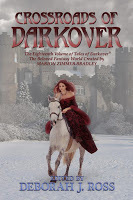 points, love lost and found, all in the beloved world of the Bloody Sun. Stories by Jenna Rhodes, Pat MacEwen, Gabrielle Harbowy, Evey Brett, Rosemary and India Edghill, Diana L. Paxson, and more!
points, love lost and found, all in the beloved world of the Bloody Sun. Stories by Jenna Rhodes, Pat MacEwen, Gabrielle Harbowy, Evey Brett, Rosemary and India Edghill, Diana L. Paxson, and more!
Order yours today at: iBook, Kindle, Kobo, Nook.
Table of Contents is here.
While we (Rosemary and India Edghill) have collaborated before – which is always wonderful, because we have different strengths as writers – this is our first Darkover collaboration. So in addition to working with each other, we’re also working within a third author’s universe. Being able to “play” in MZB’s power Darkover universe and to co-author with each other is incredibly energizing.
Our story in CROSSROADS OF DARKOVER is “A Cobbler to His Last,” and was inspired not only by the Darkovan Dry Towns, but by the research India’s done on women’s life in the Middle East, as well as by what we now know about how the people that anthropologists like Margaret Mead actually felt about being interviewed. One of Mead’s original subjects said later that she and her purposely mislead Mead and invented answers to what they felt were intrusive questions. In comparison to Mead’s monumental but controversial works, Elizabeth Warnock Fernea lived within the women’s world her husband (a fellow anthropologist) could not enter, and her works are regarded as groundbreaking and definitive in the field of women’s studies in the Middle East.
India has a long-standing interest in the Dry Towns, and Rosemary agreed that seeing scenic Darkover through the eyes of a woman who arrives with no real information about Darkover except that the Darkovan women live horrifically restricted lives. So what would really be going on when our protagonist, Grace, tried to study Darkovan women? What will Grace really find? And what would the Darkovan women think when they interacted with her?
Tossing a woman from a very egalitarian society into newly-opened Darkover was a fascinating. Grace interacts with comynara, Renunciates, farmers’ wives, and chained Dry Town women, and struggles to truly understand what she learns – which turns out to be harder to do than she’d thought it would be. Remaining totally object turns out to be almost impossible. In the end, she learns more, perhaps, than she truly wanted to about relationships between men and women.
Unfortunately, since “Cobbler to His Last” is a short story, not a novel, we weren’t able to include everything we’d wanted to add to the mix. However, we had a lot of fun playing what, say, the small-holders’ wives opinions of the studious off-worlder in their midst. Or India’s favorite scene-that-doesn’t-exist in the confines of the story: Lord Akram’s conversation with his mother when she tells him he’s going to have to take on yet another wife!
Rosemary Edghill describes herself as the keeper of the Eddystone Light, corny as Kansas in August, normal as blueberry pie, and only a paper moon. She says she was found floating down the Amazon in a hatbox, and, because criminals are a cowardly and superstitious lot, she became a creature of the night (black, terrible). She began her professional career working as a time-traveling vampire killer and has never looked back. She's also a New York Times Bestselling Writer.
About herself, India Edghill writes, Having written four books about Biblical women (Delilah, Queenmaker, Wisdom's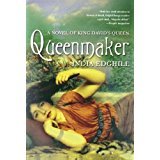 Daughter, and Game of Queens), I'm now writing an epic-length romantic historical novel set in Victorian India. And India (that's me, not the country) is also going Indie! My short stories will be available in a collection: The Courtesan Who Loved Cats and Other Stories, and my mystery series set in 1984 New York City, starring Cornelia Upshaw, a professional temporary secretary, will be continued as well. The first book in the series, File M For Murder, should be reissued in 2017.
Daughter, and Game of Queens), I'm now writing an epic-length romantic historical novel set in Victorian India. And India (that's me, not the country) is also going Indie! My short stories will be available in a collection: The Courtesan Who Loved Cats and Other Stories, and my mystery series set in 1984 New York City, starring Cornelia Upshaw, a professional temporary secretary, will be continued as well. The first book in the series, File M For Murder, should be reissued in 2017.

 points, love lost and found, all in the beloved world of the Bloody Sun. Stories by Jenna Rhodes, Pat MacEwen, Gabrielle Harbowy, Evey Brett, Rosemary and India Edghill, Diana L. Paxson, and more!
points, love lost and found, all in the beloved world of the Bloody Sun. Stories by Jenna Rhodes, Pat MacEwen, Gabrielle Harbowy, Evey Brett, Rosemary and India Edghill, Diana L. Paxson, and more!Order yours today at: iBook, Kindle, Kobo, Nook.
Table of Contents is here.
While we (Rosemary and India Edghill) have collaborated before – which is always wonderful, because we have different strengths as writers – this is our first Darkover collaboration. So in addition to working with each other, we’re also working within a third author’s universe. Being able to “play” in MZB’s power Darkover universe and to co-author with each other is incredibly energizing.
Our story in CROSSROADS OF DARKOVER is “A Cobbler to His Last,” and was inspired not only by the Darkovan Dry Towns, but by the research India’s done on women’s life in the Middle East, as well as by what we now know about how the people that anthropologists like Margaret Mead actually felt about being interviewed. One of Mead’s original subjects said later that she and her purposely mislead Mead and invented answers to what they felt were intrusive questions. In comparison to Mead’s monumental but controversial works, Elizabeth Warnock Fernea lived within the women’s world her husband (a fellow anthropologist) could not enter, and her works are regarded as groundbreaking and definitive in the field of women’s studies in the Middle East.
India has a long-standing interest in the Dry Towns, and Rosemary agreed that seeing scenic Darkover through the eyes of a woman who arrives with no real information about Darkover except that the Darkovan women live horrifically restricted lives. So what would really be going on when our protagonist, Grace, tried to study Darkovan women? What will Grace really find? And what would the Darkovan women think when they interacted with her?
Tossing a woman from a very egalitarian society into newly-opened Darkover was a fascinating. Grace interacts with comynara, Renunciates, farmers’ wives, and chained Dry Town women, and struggles to truly understand what she learns – which turns out to be harder to do than she’d thought it would be. Remaining totally object turns out to be almost impossible. In the end, she learns more, perhaps, than she truly wanted to about relationships between men and women.
Unfortunately, since “Cobbler to His Last” is a short story, not a novel, we weren’t able to include everything we’d wanted to add to the mix. However, we had a lot of fun playing what, say, the small-holders’ wives opinions of the studious off-worlder in their midst. Or India’s favorite scene-that-doesn’t-exist in the confines of the story: Lord Akram’s conversation with his mother when she tells him he’s going to have to take on yet another wife!
Rosemary Edghill describes herself as the keeper of the Eddystone Light, corny as Kansas in August, normal as blueberry pie, and only a paper moon. She says she was found floating down the Amazon in a hatbox, and, because criminals are a cowardly and superstitious lot, she became a creature of the night (black, terrible). She began her professional career working as a time-traveling vampire killer and has never looked back. She's also a New York Times Bestselling Writer.
About herself, India Edghill writes, Having written four books about Biblical women (Delilah, Queenmaker, Wisdom's
 Daughter, and Game of Queens), I'm now writing an epic-length romantic historical novel set in Victorian India. And India (that's me, not the country) is also going Indie! My short stories will be available in a collection: The Courtesan Who Loved Cats and Other Stories, and my mystery series set in 1984 New York City, starring Cornelia Upshaw, a professional temporary secretary, will be continued as well. The first book in the series, File M For Murder, should be reissued in 2017.
Daughter, and Game of Queens), I'm now writing an epic-length romantic historical novel set in Victorian India. And India (that's me, not the country) is also going Indie! My short stories will be available in a collection: The Courtesan Who Loved Cats and Other Stories, and my mystery series set in 1984 New York City, starring Cornelia Upshaw, a professional temporary secretary, will be continued as well. The first book in the series, File M For Murder, should be reissued in 2017. 
Published on May 28, 2018 01:00
May 25, 2018
[personal] Hope for Our Kids
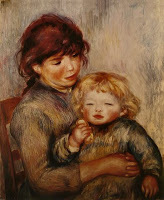 Renoir, Maternite, 1887
Renoir, Maternite, 1887On Mother’s Day, May 13 2018, I attended the graduation of my youngest daughter from medical school. While this is surely an occasion of joy and pride for all families, in this case it is especially so. Rose had a long, hard struggle through her adolescence and teen years. As her (single, working) mother, I couldn’t wave a magic wand and make her problems go away; what she needed was patience and love, especially my unwavering belief that she was resourceful enough to cope her challenges. One of the things that helped me during those difficult years was hearing from another mother about the rough time her son had gone through, but that he had come through those times, rebuilt his life, and was now a successful emergency room physician. (Both our kids becoming doctors is an interesting coincidence.)
For quite a while, I blamed myself for Rose’s difficulties. She’d been an intense, fiery toddler, than an easy-going child. When my mother was murdered, Rose was only 3 months old, so she grew up with me struggling through initial PTSD recovery. It was sheer awful luck that her puberty and my crisis (after the first parole hearing of the man who did it) and subsequent breakup of the family happened about the same time. She and I ended up moving to a different part of the state, both of us trying to restart our lives. Marion Zimmer Bradley had invited me to collaborate with her on Darkover, so my writing career was getting started again. I was dating the man I eventually married, so many aspects of our lives were happier and more stable. Except, of course, for adolescent hormones.
After doing well in middle school, Rose starting having difficulty, including self-harm. It was clear to me that if I got on her case about it, the only result would be that she would stop talking to me and I could not help her. So I took my worries elsewhere, including to the friend who told me about how her son had overcome drug addition and other serious problems, then finished college and went on to medical school. Another story I heard involved a kid who was living at home and not doing much. When his parents issued an ultimatum to either go to school or get a job. the kid moved out, became a drug dealer, and ended up in prison. The friend who told me this story was at a loss to do with her own son, who had dropped out of college and moved back home. Her thought was that at least she knew where her son was, and he was in a safe place until he could figure things out.
My daughter, too, was in a safe place. But just having a roof over her head wasn’t enough. I found psychiatric help for her and transferred her into the independent studies program at her high school when she was unable to attend classes regularly. I consider those basic parental responsibilities. But most of all, I found ways to deal with my own fears without inflicting them on her. My therapist pointed out that my daughter did not need to hear from me how worried I was for her future; what she needed to hear was my faith in her ability to deal with whatever problems she had, in her innate resourcefulness, determination, and creativity. At first it felt strange to say that aloud to her, and I had to work hard to find occasions and ways of speaking that were appropriate. Sometimes it felt as if I were “faking it until I could make it.” But with repetition, my perceptions changed. Even if I didn’t say “I believe in you” aloud, I thought it over and over, until believing in her became part of me. I noticed the times she was handling things well, in her own inimitable fashion, instead of focusing on when she was overwhelmed. Then I could offer her genuine praise. And, on occasion, outright admiration.
Those times felt as if they would never end, but end they did. I can’t claim credit. It was all Rose’s doing. She saved herself. What I did was keep her alive and safe until all the parts of her life came together. I kept myself sane so that I could love her.
I tell this story so that some other parent might read it and hold on to it through the dark times. There are no guarantees, and not all stories end as well as my daughter’s (or my friend’s son’s). But yours just might.

Published on May 25, 2018 01:00
May 23, 2018
Today's Moment of Serenity
Published on May 23, 2018 01:00
May 21, 2018
Crossroads of Darkover Author Interview: Rebecca Fox

Now available, an all-new Darkover anthology featuring tales of decisions, turning points, love lost and found, all in the beloved world of the Bloody Sun. Stories by Jenna Rhodes, Pat MacEwen, Gabrielle Harbowy, Evey Brett, Rosemary and India Edghill, Diana L. Paxson, and more!
Order yours today at: iBook, Kindle, Kobo, Nook.
Table of Contents is here.
Deborah J. Ross: Tell us about your introduction to Darkover. Rebecca Fox: As a moody teenage girl with SFnal leanings in the early/mid-1990s, I really had three main reading choices: Pern, Valdemar, or Darkover. Pern I’d found on my own, in a sixth grade language arts reader of all places. My discovery of Valdemar and Darkover (simultaneously) at the age of 14 or 15 and the subsequent loss of at least a week’s worth of sleep while I devoured several books as fast as I could possibly read them I owe to a camp roommate. My introduction to writing Darkover came via Rosemary Edghill - who is, incidentally, a brilliant human being, a terrific writer, and a truly stellar teacher - who mentored me through my angst-filled and far less than graceful move from Darkest Fanficcia to the Land of Paid Professional Writers and somehow managed not to murder me in the process (it would have been entirely justified, trust me). At any rate, Rosemary invited me to collaborate with her on a story for Stars of Darkover (“Second Contact,” of which I’m still terribly fond) and the rest is history. I remain more grateful than I can really express for the invitation, as well as for patient lessoning in things like how to pace a story and how to edit my own work and more than a few good stiff doses of humility. I wouldn't be here without her, and I hope one of these days I’ll at least get the chance to pay it forward.
DJR: What inspired your story in Crossroads of Darkover?RF: Well, the glib (and not in the least untrue) answer here is: my complete inability to let anything go, ever. I get so attached to some worlds or characters that it’s hard to simply bid them adieu after a bare six thousand words or so. And I just couldn’t bring myself to say goodbye to Jamie MacRorie and Miralys after nothing more than a few paragraphs in “Where You’re Planted” (never you mind that I’d originally produced them simply because Cat needed to get her parents from somewhere).
The less glib answer is that at the time I sat down to think about my next Darkover story, I’d been wallowing happily in the very earliest Darkover books, and in one of them – I think it was The Bloody Sun but I wouldn’t swear to it in a court of law – there’s this really brief mention of the Terranan and the Darkovans having fought a war over “resources,” with the implication that the Terrans lost or were somehow humiliated. Since that one paragraph was the only time I’d ever seen that “war” mentioned, it couldn’t have been much of a war, could it? Between the fact that I found myself kind of obsessing over what might have happened (because that’s what I do) and the fact that I’ve never met a spy story I didn’t like, “The Short, Inglorious War” was born.
DJR: Is there another Darkover story you would particularly like to write?RF: Speaking of my inability to let things go, I think we’ll be seeing more of Miralys in the future assuming The Powers That Be let me write another one of these things. Sometimes characters surprise you when they start taking shape on the page, and she definitely did. I love that she’s such a badass, but in a very Darkovan way! And she’s such an interesting character anyhow, since she was born on Darkover but educated in the Terran Empire and as a result finds herself very much caught betwixt-and-between two worlds. I can’t imagine her re-entry to Darkovan society after years spent among the Terranan was either smooth or easy.
I suspect I’ve probably also got an Ages of Chaos story or three in me. Given my horsey background, it’s a wonder I haven’t written a MacAran Gift story yet. (As the wise woman said, give it time…)
DJR: What have you written recently?
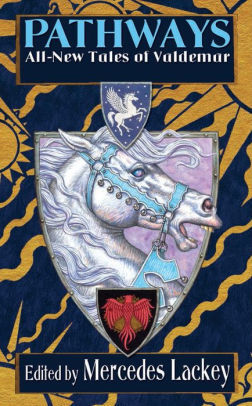 RF: My story “Ordinary Miracles” was just published in Pathways, the newest Valdemar anthology. If you’re fond of Karse, wayward Companions in sticky situations, and scruffy barn cats that might not be exactly what they seem, you should definitely go and read it (also the other stories in the anthology are amazing, which is probably the more compelling argument here…)
RF: My story “Ordinary Miracles” was just published in Pathways, the newest Valdemar anthology. If you’re fond of Karse, wayward Companions in sticky situations, and scruffy barn cats that might not be exactly what they seem, you should definitely go and read it (also the other stories in the anthology are amazing, which is probably the more compelling argument here…) DJR: Anything else you’d like our readers to know about you, Darkover, or life in general?RF: You know, the fastest way to make my mind go completely blank is to ask me a question like that. Um, these are not the droids you’re looking for.
Rebecca (Becky) Fox is a Kentuckian by happy accident and an Arizonan by birth. She has sold short stories to a number of anthologies, and someday–if she can stop being distracted by horses, wild birds, Walt Disney World, and the Internet for long enough–she may actually finish a novel. In her “other life”, she’s a field biologist and an associate professor of biology at a private four-year college, and enjoys pointing out to her students that the dinosaurs are in fact alive and well and eating at your bird feeder. Becky shares her life with three parrots, a Jack Russell terrier who makes no secret whatsoever of being an evil genius in a dog suit, and a big goofy gray thoroughbred gelding who was once the world’s worst racehorse.

Published on May 21, 2018 01:00
May 20, 2018
Today's Moment of Serenity
Published on May 20, 2018 11:05
May 18, 2018
In Troubled Times: The Challenge of Compassion
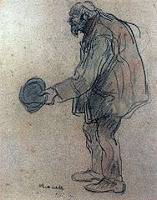 Nov. 10, 2009
Nov. 10, 2009
"All real living is meeting." -- Martin Buber
At World Fantasy Convention, three friends and I ventured forth from the hotel in search of un-conditioned air and reasonably-priced food. Our path took us into a pedestrian mall with a lively street scene. Two encounters stand out in my mind. The first was with a homeless man. As he asked us for money, his voice was low and dispirited, as if he had no expectation of a response. He seemed on the edge of giving up hope. Usually I feel uncomfortable giving cash, although if I have the time, I may offer to buy the person a meal. I didn't have the time, but something in this man spoke to me. Without questioning that inner prompting, I turned back, dug in my purse for a dollar, and offered it to him. It seemed to me that a kind word and the recognition of our common humanity was as important as that small amount of money. As I spoke to him and met his eyes, I saw them fill with tears. In broken tones, he told me of how he had lost his job and left his home, rather than be evicted. I don't know if he was telling the truth or if he later used the money to buy drugs or booze. I'm not sure it matters. The moment between us, his response to being treated with kindness, was real. For all I know, it might have been the tiny nudge that kept hope alive.
Further up the street, a group of young adults in uniform-like black sweats was holding forth in loud voices, lecturing all within earshot, preaching their religious beliefs. Their voices echoed against the buildings and their eyes were hard and angry. As we passed, I tried to imagine what I might say to them -- "Live and let live"? A few people on the street shouted back at them. My friends and I thought of all sorts of snappy retorts, none of which would have amounted to any real communication. I realized this was a way of diffusing the discomfort caused by the abrasive behavior of these young people.
How can speech that is combative to the point of hostility be answered? It seemed to me impossible to have even a token conversation with someone who is browbeating me at the top of his lungs. Isn't it necessary for both parties to be willing to take turns, to listen to one another? It did occur to me that these young people, berating all within earshot for their sinful ways, were not at all interested in hearing anyone else's point of view. I wonder what would have satisfied them.
Afterwards, I was struck by the contrast in the two encounters. Certainly, the evangelists were more intent on pounding home the evils of this world and terror of the next than in giving to the poor. But there is this: reaching out to the homeless man was easy. His manner was gentle and humble. He spoke out of need and then gratitude. The angry young people, on the other hand, presented a much greater challenge, one I was not equal to. I still do not know how I might be present with them without getting drawn in to acrimony and name-hurling.
Charity is easy. Seeing the common humanity in people who are screaming hatred at you -- that's hard.
The drawing is by Isidre Nonell (1872–1911)

Published on May 18, 2018 01:00
May 14, 2018
Crossroads of Darkover Author Interview: Robin Wayne Bailey
 Just out, an all-new Darkover anthology featuring tales of decisions, turning points, love lost and found, all in the beloved world of the Bloody Sun. Stories by Jenna Rhodes, Pat MacEwen, Gabrielle Harbowy, Evey Brett, Rosemary and India Edghill, Diana L. Paxson, and more!
Just out, an all-new Darkover anthology featuring tales of decisions, turning points, love lost and found, all in the beloved world of the Bloody Sun. Stories by Jenna Rhodes, Pat MacEwen, Gabrielle Harbowy, Evey Brett, Rosemary and India Edghill, Diana L. Paxson, and more!Order yours today at: iBook, Kindle, Kobo, Nook.
Table of Contents is here.
Deborah J. Ross: Tell us about your introduction to Darkover. Robin Wayne Bailey: The first Darkover tale I ever read was Darkover Landfall, and I came across it perhaps in an unusual way. At the time, I was working in a bookstore part-time to earn college money, but I was also already a fairly dedicated book collector. Among the books I collected were DAW's yellow-spined paperbacks, which DAW was kind enough to number. I searched these out in new bookstores and used bookstores, determined to own them all, and this is how I came across Darkover Landfall. I'm not sure if I had previously read any of Marion Zimmer Bradley's earlier work, but this book captivated me. I was a sucker for a good "lost colony" story, and this proved one of the best. I remember the day we unpacked that latest DAW shipment and removing this book with its shiny cover and artwork by, I think, Jack Gaughan. It excited me then, and although I drifted away from the series after a time, it continues to excite me.
DJR: What about the world drew you in?RWB: Several things about Darkover struck me as fairly unique, even daring, at the time the books were appearing. The blending of disparate cultures immediately stood out. The first ship that crash landed on Darkover carried an interesting mix of Celtic and Spanish colonists, and maybe a few others I'm forgetting. In so many sf novels, then and now, humans seem to be a homogeneous group without national or cultural identity. Not so, Darkover. Marion emphasized and celebrated these differences. The other thing that surprised me was her willingness to play with sexuality and gender roles. Lots of early sixties and seventies science fiction played with sex, but always of a rather tame heterosexual variety. Marion went further. Her depictions of the Renunciates and the society established by the Free Amazons was remarkable for its time, as was way in which polygamy was regarded throughout the series. Her views on homosexuality and her willingness to write gay characters into the series was also almost revolutionary, although her depictions of gay men and relationships troubled me then and continue to trouble me. But that's for another essay, perhaps.
DJR: What inspired your story in Crossroads of Darkover? RWB: Ah, an easy one to answer. I've tried to make each of the stories I've written for the various recent Darkover anthologies different from each other and different from other stories that appeared alongside mine. With Crossroads of Darkover, I asked myself how I might best do that again, and it occurred to me that there had never been an outright horror story set on Darkover. As it happens, one of my favorite horror stories in "The Willows," by Algernon Blackwood, written in 1907. It's subtle and it's creepy. I didn't want to copy it and transfer it to Darkover, but I wanted to analyze what made that story so powerful and try to bring those techniques into my Darkover story. I loved the result, but Deborah Ross and I both agreed that it didn't quite work in a Darkover setting, given everything we already know about Darkovan history and culture. So she allowed me to rewrite "Snowquake" to make it better fit in. It's still a creepy story and as close to a horror story as I could make it. I hope readers will love it.
DJR: Is there another Darkover story you would particularly like to write?RWB: I'm sure there are any number of other Darkover stories I'd still love to write - even if I don't know precisely what they are yet. Deborah allows me a lot of freedom to explore the themes I want and to be critical of Darkovan society where I think criticism is needed. I appreciate her as an editor very much.
DJR: What have you written recently? What is your favorite of your published works and why? RWB: I still continue to write a lot of short stories, many for the folks at the Marion Zimmer Bradley Trust. I enjoy working with all of them,, and they seem to like my work. So I'm happy. But I'm trying to push myself in new directions, too. I'm doing some script writing on the West Coast these days, and that's been amazing and challenging. I'm back to work on a fantasy novel, also, and enjoying it a lot. A number of recent bad experiences with New York publishing had soured me on writing for a while, but once again I'm starting to find a lot of joy in it.
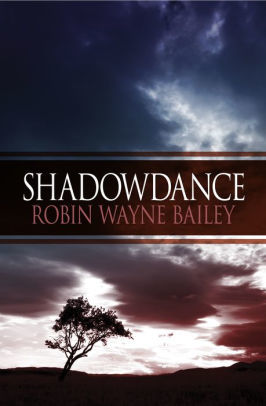 Among my favorite works is Shadowdance, a 1997 novel that was, essentially my coming out novel written at a time when I felt like my whole world was crashing, but instead, through the writing of that book, I found an optimism and freedom like I'd never experienced before. It's available in print, ebook and audible formats now and has endured fairly well. And of course, my Frost novels and stories are ongoing. I love writing those.
Among my favorite works is Shadowdance, a 1997 novel that was, essentially my coming out novel written at a time when I felt like my whole world was crashing, but instead, through the writing of that book, I found an optimism and freedom like I'd never experienced before. It's available in print, ebook and audible formats now and has endured fairly well. And of course, my Frost novels and stories are ongoing. I love writing those.DJR: What lies ahead for you? RWB: What lies ahead? The only answer is "Who knows?" My Fritz Leiber inspired novel, Swords Against the Storm, will soon be reprinted by Centipede Press. I'm eager to see that, as I'm quite proud of it. And more stories, of course. And hopefully, more screen work. And I have a growing desire to write a Western novel or two. But life is change and life is adventure. I'm in the Carribbean one day and Palm Springs the next or hiking in the Rockies. I cannot stop writing, but what I write - what kind of work or what genre - that's a completely open question.
Robin Wayne Bailey is the author of numerous novels, including the Dragonkin trilogy and the Frost series, as well as Shadowdance and the Fritz Leiber-inspired Swords Against the Shadowland. His short stories have appeared in many magazines and anthologies with frequent appearances in Marion Zimmer Bradley's Sword and Sorceress series and Deborah J. Ross's Lace and Blade volumes. Many of his stories have been collected in two volumes, Turn Left to Tomorrow and The Fantastikon: Tales of Wonder, published by Yard Dog Books. He's a former two-term president of the Science Fiction and Fantasy Writers of America and a co-founder of the Science Fiction Hall of Fame. His latest book is Little Green Men--Attack!, an anthology co-edited with Bryan Thomas Schmidt.

Published on May 14, 2018 01:00









